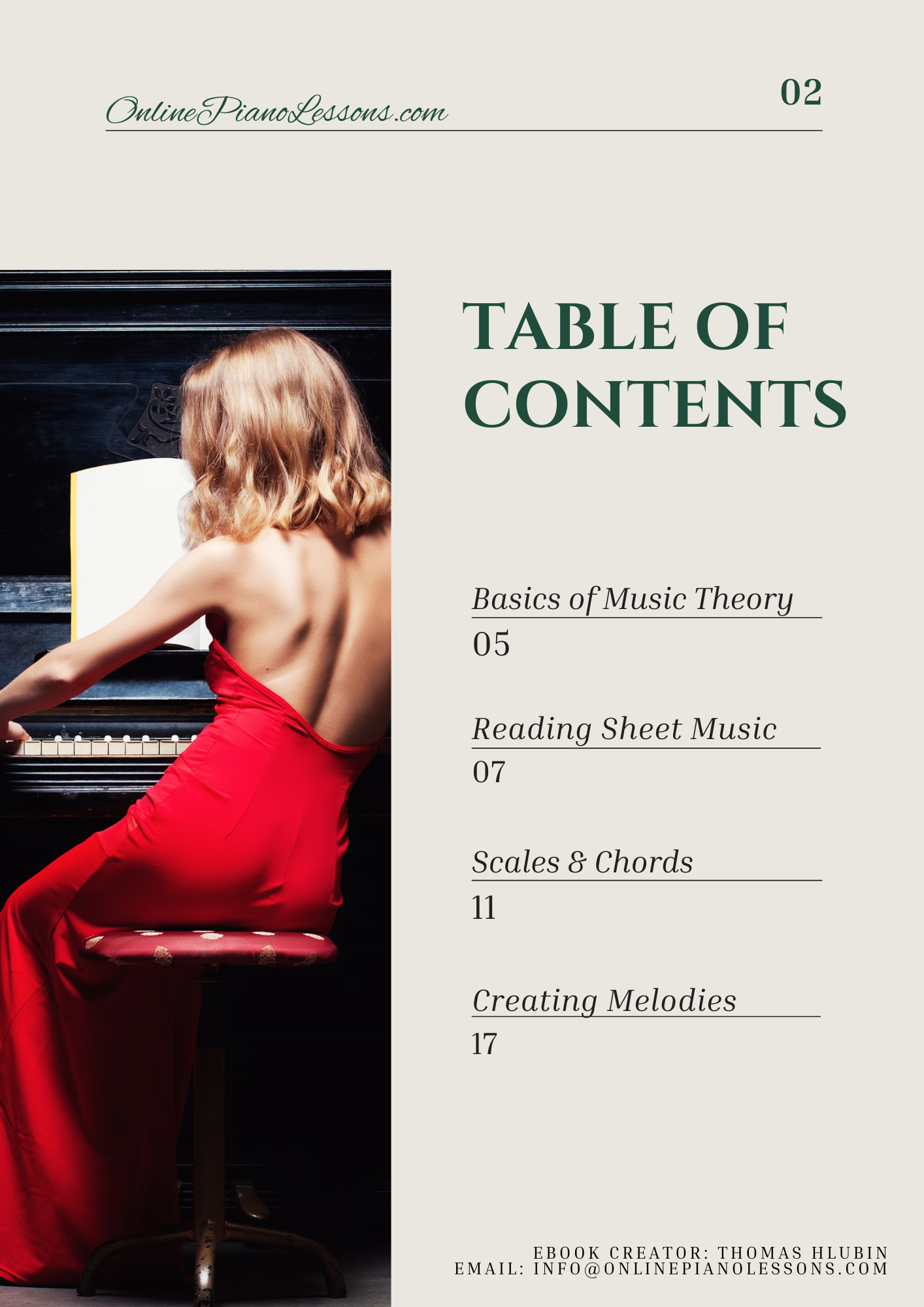Lydian scales are one of the most luminous and intriguing modes you can play on the piano. They sound bright, slightly “floating,” and a little bit surprising compared to the ordinary major scale. If you want to expand your tonal palette on the piano — for composing, improvising, or simply exploring new colors — learning Lydian scales will give you fresh melodic and harmonic options.
This in-depth guide explains what Lydian scales are, how they’re constructed, what they sound like on the piano, practical fingerings and exercises, harmonization tips, and musical uses.
What Are Lydian Scales?
Lydian scales are one of the seven modes derived from the major scale. The Lydian mode starts on the fourth degree of a major scale. In simple terms, take a major scale and start on its fourth note — that sequence of notes, played from the fourth up an octave, is a Lydian scale.
For example, play all the white keys from F to F on the piano and you’re playing F Lydian (F G A B C D E F). It has the same notes as C major but centers on F. What distinguishes the Lydian scales is the raised fourth degree — in F Lydian the B is natural instead of B♭ — and that raised fourth is the defining characteristic.
The Formula: How To Build A Lydian Scale
To build a Lydian scale from any root, use this whole/half-step pattern:
W — W — W — H — W — W — H
Or think intervallically: 1 — 2 — 3 — #4 — 5 — 6 — 7 — 1
So if you want to form G Lydian on the piano, start on G and follow the pattern to get:
G — A — B — C♯ — D — E — F♯ — G
Notice the C♯: the raised fourth gives the scale its bright, airy feel.
What Lydian Scales Sound Like On The Piano
On the piano, Lydian scales sound like major scales with extra brightness or lift. The raised fourth removes the typical half-step between 3 and 4 found in a major scale, creating a sense of openness and forward motion. That sharpened 4th functions somewhat like a color tone — it doesn’t destabilize the key, but it adds an instant “other” quality that listeners perceive as dreamy, optimistic, or even a little cosmic.
Played legato and slowly, Lydian scales feel expansive. Played in faster runs or arpeggios, they create sparkling colors that stand out from diatonic major passages. Because the raised fourth does not demand resolution the way a raised seventh does, Lydian scales can remain stable while sounding novel.
Lydian Scales vs Major And Other Modes
Comparing modes helps clarify what makes Lydian special:
- Major (Ionian): 1 — 2 — 3 — 4 — 5 — 6 — 7
- Lydian: 1 — 2 — 3 — #4 — 5 — 6 — 7
So Lydian is like a major scale with a sharpened fourth. This single difference produces a magnitude of expressive possibilities. Compared with Mixolydian or Dorian, Lydian is unambiguously bright — it lacks the flattened 7th or flattened 3rd that make other modes sound bluesy or minor.
Chords And Harmonization From Lydian Scales
Harmonizing a Lydian scale on the piano gives you distinctive chord colors:
- The tonic chord is major (I), as in major keys.
- The IV chord becomes augmented or contains the #11 color when extended (e.g., in G Lydian, C major becomes C(#11) color because of the C♯ as #4 relative to G).
- You can create lush major seventh chords with added #11 — these are essential Lydian sonorities used by composers and jazz players.
For example, in G Lydian (G A B C♯ D E F♯):
- Gmaj7 (G–B–D–F♯) works as the tonic.
- C♯ functions as an upper color tone — you might use a C♯ in a Gmaj7(#11) voicing to highlight the Lydian mood.
- Chord progressions that emphasize tonic and IV-derived sonorities (I — IVadd#11 — I) emphasize the Lydian color.
On piano, voicings that place the #4 as a tasteful upper extension (not clashing with chord tones) produce the cleanest Lydian sound.
Practical Fingerings And Piano Technique
Lydian scales use the same fingering strategies you’d use for major scales, but attention to smooth thumb passage and even tone is vital where black/white transitions occur (e.g., when the raised 4th is a black key).
- One-octave right-hand example for G Lydian: 1–2–3–1–2–3–4–1 (adapt as needed for keys with many sharps/flats).
- Practice hands separately, then together. Aim for even tone across white and black keys.
- Use legato phrasing and subtle dynamics to make the raised fourth sound intentional rather than accidental.
Work slowly with a metronome, then build speed while preserving tonal clarity. On piano, voicings that include the #11 as a top extension often sound best in the right hand while the left hand holds rootless or simple bass.
Exercises To Internalize Lydian Scales On The Piano
- All-Keys Scale Drill: Practice one-octave Lydian scales in every key. Since Lydian is the major scale starting on the 4th, you’ll overlap many familiar patterns, but focus on the raised fourth in each key.
- Arpeggio + #11 Exercise: Play tonic major seventh arpeggios, then add the #11 as a top note (e.g., Gmaj7 + C♯).
- Modal Vamping: Create a two-chord vamp (Imaj7 — IVmaj7/#11) and improvise Lydian melodies for 2–3 minutes per key.
- Interval Sequences: Practice sequences that leap to the #4 as an accent tone (e.g., 1–3–#4, 2–4–6 patterns) to hear the scale’s color.
- Melodic Writing: Compose 4-bar phrases using only Lydian notes; then harmonize them with Lydian voicings on the piano.
Daily repetition of these drills (10–20 minutes) makes the Lydian sound comfortable and musical.
Musical Uses And Genres
Lydian scales appear across many styles:
- Film and cinematic music: Lydian’s open, airy quality is perfect for wonder, uplift, and fantasy.
- Jazz and fusion: Players use Lydian scales and Lydian-dominant variants for color on major and lydian-dominant chords.
- Progressive rock and pop: Lydian passages create a modern, expansive feel.
- Contemporary classical: Composers use the scale for ethereal textures and modal contrasts.
If you listen closely to contemporary film scores or modern jazz, you’ll often hear Lydian scales used as a harmonic palette for magical or expansive moments.
Common Mistakes And How To Avoid Them
- Treating #4 as a mistake: Many pianists accidentally treat the raised fourth as an error. Intentionally emphasize it during practice so it becomes a musical color.
- Overusing Lydian: Because Lydian sounds special, it’s tempting to use it everywhere. Use it as contrast to diatonic material for maximum effect.
- Poor voicings: Shoving the #4 into the low register or into a clashing chord tone can muddy the sound—put it in upper extensions for clarity.
Final Thoughts
Lydian scales expand your piano palette with a single, powerful twist: the raised fourth. Once you internalize the sound — via scales, arpeggios, and modal vamps — Lydian becomes a versatile tool for composition, improvisation, and expressive playing. Try inserting a Lydian passage into a piece you already know, or build a short Lydian vamp and improvise for five minutes. The scale’s luminous color will likely inspire new musical ideas you hadn’t expected.
FAQ
Q: What makes a scale Lydian?
A Lydian scale is a major-mode scale with a raised fourth degree. That #4 is the hallmark of Lydian scales.
Q: How do Lydian scales sound on the piano?
They sound bright, open, and slightly otherworldly — major but with a lifted, floating quality because of the raised fourth.
Q: Which keys are easiest to start Lydian scales on the piano?
Start with F Lydian (all white keys) or C Lydian (C D E F♯ G A B C) to feel the difference against familiar major patterns.
Q: Can Lydian be used for improvisation on piano?
Yes — Lydian scales are excellent for improvisation, especially over major chords where you want a modern, airy color. Practice improvising over Imaj7 and Imaj7(#11) vamps.
Q: Are Lydian scales the same as Lydian dominant?
No. Lydian dominant (or Lydian b7) is a variant used over dominant chords and has a flattened seventh. Pure Lydian keeps the natural 7th.
Q: How often should I practice Lydian scales?
Short, frequent practice—10–20 minutes daily—will integrate the Lydian sound into your piano vocabulary quickly.




 Hi, I'm Thomas, Pianist Composer,
Hi, I'm Thomas, Pianist Composer,  I love playing piano, creating new melodies and songs, and further developing my online piano course and making updates/additions to my site OnlinePianoLessons.com!
I love playing piano, creating new melodies and songs, and further developing my online piano course and making updates/additions to my site OnlinePianoLessons.com!  Now that is what I call fun!
Now that is what I call fun!
